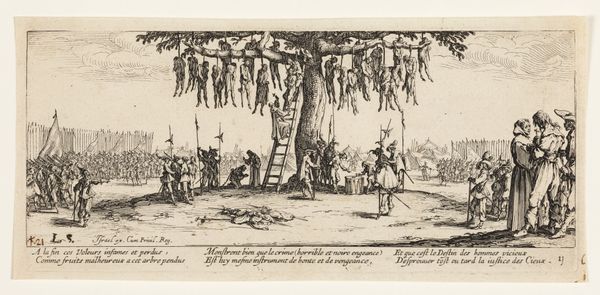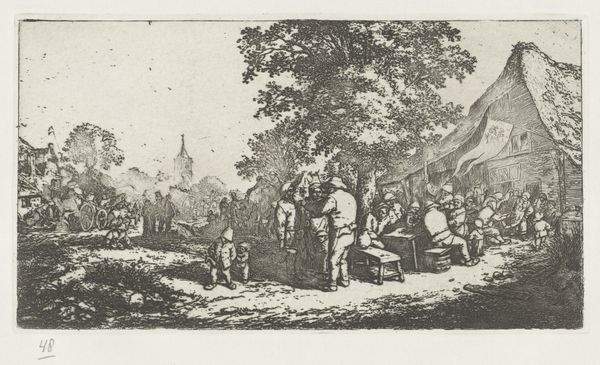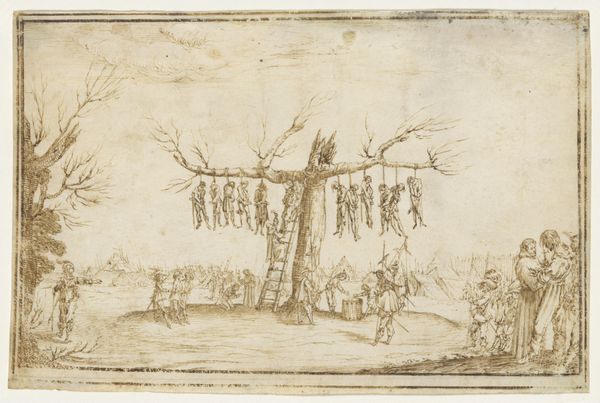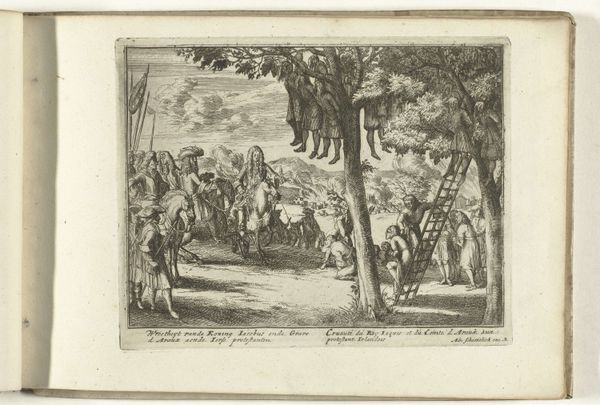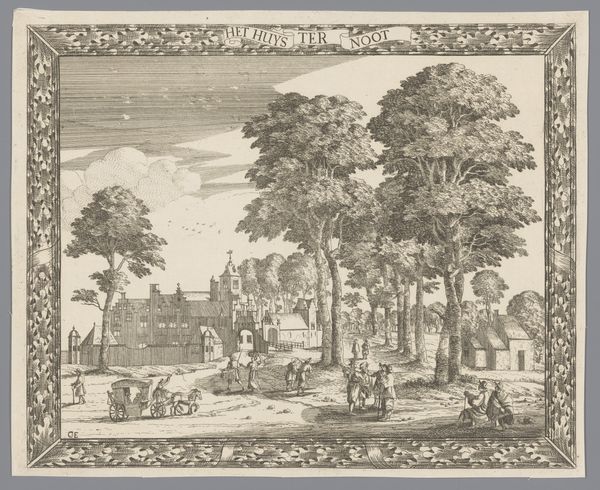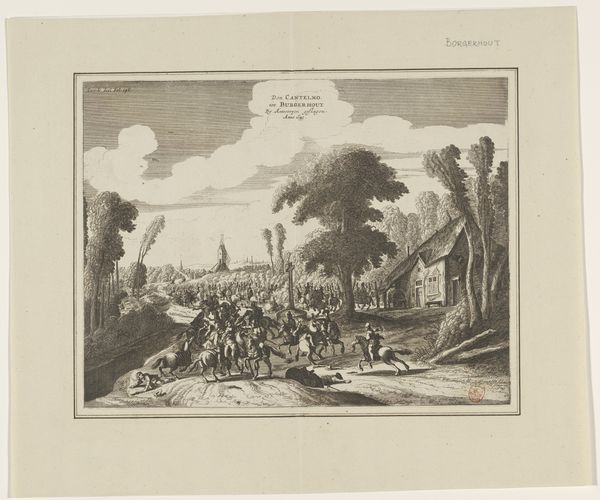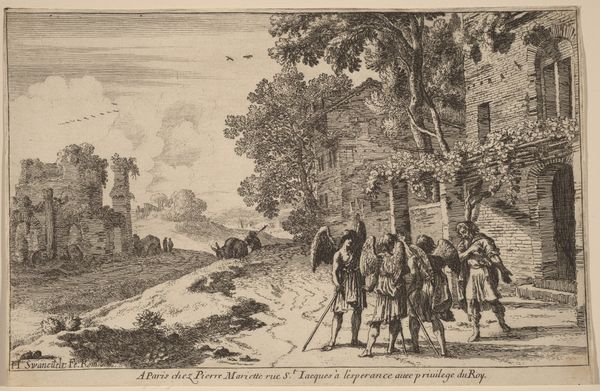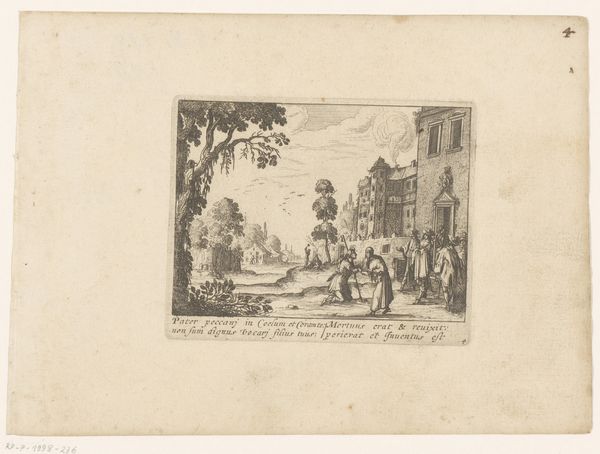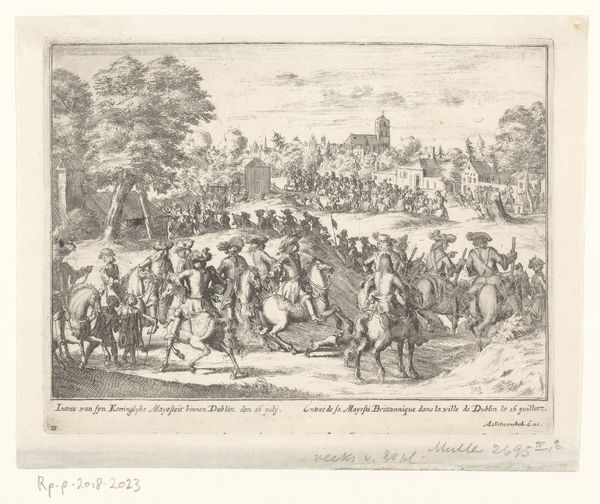
The Hanging, plate eleven from The Large Miseries of War n.d.
0:00
0:00
drawing, print, etching, paper
#
drawing
#
ink drawing
#
narrative-art
#
baroque
# print
#
etching
#
war
#
mannerism
#
paper
#
history-painting
Dimensions: 73 × 180 mm (image); 84 × 182 mm (plate); 99 × 200 mm (sheet)
Copyright: Public Domain
Curator: I’m immediately struck by the stark composition of this piece; it evokes such a sense of desolation. The weight of what's depicted, a mass hanging, presses down on the entire scene. Editor: Indeed. This is plate eleven, titled "The Hanging," from *The Large Miseries of War*. Although its creation date is unknown, it is by Gerrit Lucasz van Schagen and rendered through etching on paper, utilizing both ink and print techniques. It is an excellent example of Baroque narrative-art. Curator: The historical context here seems incredibly important. Beyond just portraying the act of hanging, what commentary might it offer on war itself, on the power structures inherent in conflict? It's not merely a depiction; it feels like a deeply critical statement. How does it fit into socio-political currents? Editor: The image likely speaks to the brutal realities of 17th-century conflicts and the use of public executions as tools of intimidation and control. Think of the Thirty Years’ War, which had such an immense impact across Europe at the time. Van Schagen wasn't simply making art in a vacuum. Consider the function this would have served for public perception in terms of acceptable cruelties inflicted in times of conflict. Curator: Absolutely, seeing it in terms of the politics of imagery is very revealing. Looking closer, there is an eerie, almost organized quality to the whole scene. Is that intentional, I wonder? Is this a reflection of, perhaps, normalized brutality? Editor: That is an insightful reading. Van Schagen utilizes Baroque and Mannerist styles. I suggest this adds layers to our comprehension: reflecting broader societal norms in an age of both expanding global interactions but continued acceptance of gruesome actions. How would such an artwork prompt a viewer of the time? It's a chilling document of its time, yes? Curator: Yes, absolutely chilling. But what remains potent, I think, is its capacity to make us confront difficult histories. Thank you for illuminating that context. Editor: And thank you, for highlighting the continued relevance of these considerations when viewing art today.
Comments
No comments
Be the first to comment and join the conversation on the ultimate creative platform.
